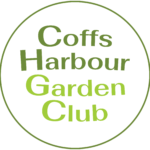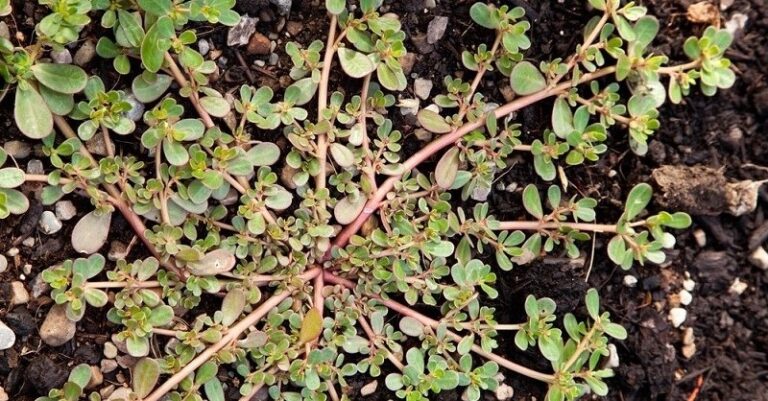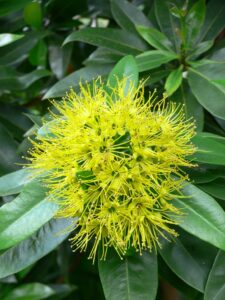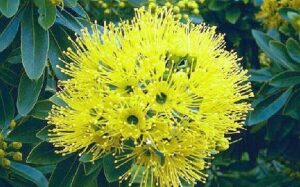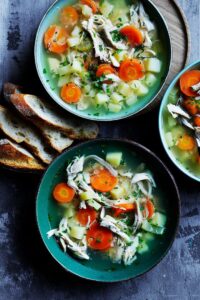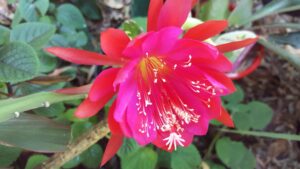After filling a bucket with this ‘stuff’ I sit down with a lovely cuppa to catch up on social media and what do I see? Apparently, Purslane (or Portulaca oleracea) is NOT a weed! This ground hugging, fleshy plant with yellow flowers originated from Persia and India and has done an excellent job of spreading throughout the world.
So wait for it guys, this little plant is a powerful, health-boosting food – it is a rich source of fibre, vitamin A, C, B vitamins, manganese, potassium, iron, magnesium, calcium, copper, Omega-3 fatty acids, betalain pigments and carotenoids (the last two are natural colourants).
Purslane is reputed to have many health benefits, including improved circulation – the Iron and Copper are vital elements for improved circulation they are vital for a healthy circulatory system.
Benefits of eating this plant:
As mentioned above improved circulatory system, that in turns improves overall health since more blood manages to get to the areas where it is needed in the body.
Being rich in potassium and Omega-3 fatty acids, purslane improves heart health, lowers blood pressure and bad cholesterol.
This powerful plant treats various kinds of gastrointestinal problems, from diarrhea to dysentery, as it contains high amounts of alanine, dopamine, malic acid, citric acid and glucose.
Purslane is low in calories, rich in fiber and nutrients, so it can keep you full and help you lose excess weight. Therefore, next time you notice purslane in the garden, pick it, and find a tasty recipe to enjoy it and reap its benefits!
More about purslane:
While purslane is widespread globally and is a common summer-growing plant on most continents, its use is documented from the Middle East by the ancient Persians, and it is still widely used as a cooked or salad vegetable in the Mediterranean. It was likely introduced to Europe by the Saracens via Spain and it thus became a common vegetable in Elizabethan England.
The young shoots are fleshy, slightly tart and mucilaninuous, and provide a salty tang to any salad. Lightly steamed, or wrapped in foil and thrown into the coals or on the BBQ it is delicious with butter and pepper, making it an excellent’greens’. The tartness is due to oxalic acid, which cooking destroys, so people with rheumatism or gout should avoid eating it uncooked.
The seeds, used by indigenous Australians to make a flour, are the highest known vegetable source of Omega-3 oils (alpha-linolenic acid). To harvest the tiny seeds,. they developed a method of piling the plants in heaps on a flat hard surface, bark or animal skin to let them dry. The seeds would automatically drop in a concentrated pile, where they could be easily gathered.
This highly nutritious and valuable plant is easy to grow in any garden or pot (don’t we know that!). It is also commercially grown for retail sale.
You can try the following purslane salad if you’re keen enough to eat your weeds.
- 1/4 cup red onion, thinly sliced
- 1 Tablespoon red wine vinegar
- 1 lemon, zested and juiced
- 1 bunch purslane, chopped with the stems removed (how much is a bunch is anyone’s guess)
- 2 Tablespoons plain yoghurt
- 2 Tablespoons olive oil
- pinch of salt and pepper
- 1/2 cucumber, chopped
- 3/4 c melon, cubed
- 5 radishes, thinly sliced
- 1/2 cup feta cheese
Instructions:
Leave the red onion, red wine vinegar and lemon juice in a bowl and set aside to marinate. In a large bowl, place the purslane, drizzle with yoghurt and olive oil, and distribute them evenly over the greens using tongs.
Add the lemon zest, salt and pepper, stir and then add the red onions, vinegar and lemon juice. Stir again, add the remaining ingredients.
Just say’n folks, I think that these pesky little suckers will still end up in my weed bucket and not on the dining room table!
